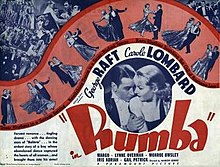
George Raft was an American film actor and dancer identified with portrayals of gangsters in crime melodramas of the 1930s and 1940s. A stylish leading man in dozens of movies, Raft is remembered for his gangster roles in Quick Millions (1931) with Spencer Tracy, Scarface (1932) with Paul Muni, Each Dawn I Die (1939) with James Cagney, Invisible Stripes (1939) with Humphrey Bogart, and Billy Wilder's comedy Some Like It Hot (1959) with Marilyn Monroe and Jack Lemmon; and as a dancer in Bolero (1934) with Carole Lombard and a truck driver in They Drive by Night (1940) with Ann Sheridan, Ida Lupino and Bogart.
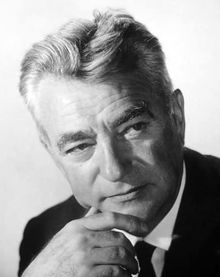
Charles Vidor was a Hungarian film director. Among his film successes are The Bridge (1929), Double Door (1934), The Tuttles of Tahiti (1942), The Desperadoes (1943), Cover Girl (1944), Together Again (1944), A Song to Remember (1945), Over 21 (1945), Gilda (1946), The Loves of Carmen (1948), Rhapsody (1954), Love Me or Leave Me (1955), The Swan (1956), The Joker Is Wild (1957), and A Farewell to Arms (1957).

Jeff Richards was an American minor league baseball player with the Portland Beavers, who later became an actor. He was sometimes credited as Dick Taylor and Richard Taylor.

The Bowery is a 1933 American pre-Code historical comedy-drama film set in the Lower East Side of Manhattan around the start of the 20th century directed by Raoul Walsh and starring Wallace Beery and George Raft. The supporting cast features Jackie Cooper, Fay Wray, and Pert Kelton.

Red Light is a 1949 American film noir crime film starring George Raft and Virginia Mayo, and directed and produced by Roy Del Ruth. Based on the story "This Guy Gideon" by Don "Red" Barry, it features strong religious overtones.
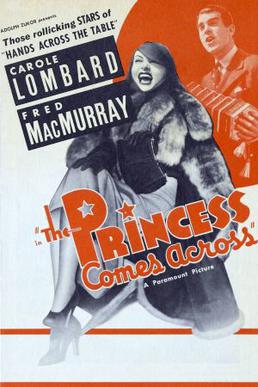
The Princess Comes Across is a 1936 American mystery comedy film directed by William K. Howard and starring Carole Lombard and Fred MacMurray, the second of the four times they were paired together. Lombard, playing an actress from Brooklyn pretending to be a Swedish princess, does a "film-length takeoff" on MGM's Swedish star Greta Garbo. The film was based on the 1935 novel A Halálkabin by Louis Lucien Rogger, the pseudonym of Laszlo Aigner and Louis Acze.

Bolero is a 1934 American pre-Code musical drama film directed by Wesley Ruggles and starring George Raft and Carole Lombard. The Paramount production was a rare chance for Raft to play a dancer, which had been his profession in New York City, rather than portraying a gangster. The film takes its title from the Maurice Ravel composition Boléro (1928). The supporting cast includes William Frawley, Ray Milland and Sally Rand.
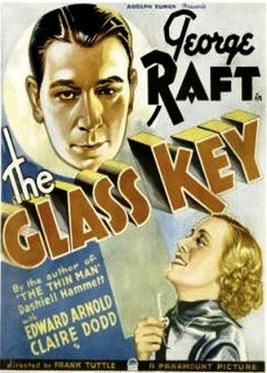
The Glass Key is a 1935 American crime drama film directed by Frank Tuttle starring George Raft, Edward Arnold, Claire Dodd, Guinn "Big Boy" Williams and Ray Milland. Ann Sheridan has a brief speaking role as Raft's character's nurse in their first film together. Produced and distributed by Paramount Pictures, it was based upon the 1931 suspense novel The Glass Key by Dashiell Hammett,

The House Across the Bay is a 1940 film directed by Archie Mayo, starring George Raft and Joan Bennett, produced by Walter Wanger, written by Myles Connolly and Kathryn Scola, and released by United Artists. The supporting cast features Lloyd Nolan, Walter Pidgeon and Gladys George.

Yours for the Asking is a 1936 American comedy film starring George Raft as a casino owner and Dolores Costello as the socialite he hires as hostess. The movie also features Ida Lupino and was directed by Alexander Hall.
I Stole a Million is a 1939 film noir crime film starring George Raft as a cab driver turned small-time crook who makes a big score and lives to regret it. The supporting cast includes Claire Trevor, Dick Foran, and Victor Jory. The movie was written by Nathanael West based on a story idea by Lester Cole, which in turn was based on the life story of bank robber Roy Gardner. It was directed by Frank Tuttle, and released by Universal Pictures.
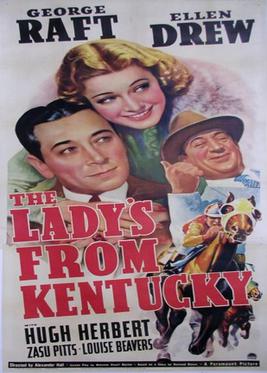
The Lady's from Kentucky is a 1939 film directed by Alexander Hall and starring George Raft and Ellen Drew. It was written by Malcolm Stuart Boylan from a story by Rowland Brown. The screenplay involves a failing bookie (Raft) who becomes half owner of a racehorse, with a Kentucky lady (Drew) owning the other half. ZaSu Pitts plays a supporting role.

You and Me is a 1938 American crime drama/comedy/romance film directed by Fritz Lang. It stars Sylvia Sidney and George Raft as a pair of ex-convicts on parole, working in a department store whose owner, played by Harry Carey, routinely hires former criminals to give them a second chance. It was written by Norman Krasna and Virginia Van Upp.

All of Me is a 1934 American pre-Code drama film directed by James Flood and starring Fredric March, Miriam Hopkins, and George Raft. The film was written by actor Thomas Mitchell and Sidney Buchman from Rose Porter's play Chrysalis.
Seton Ingersoll Miller was an American screenwriter and producer. During his career, he worked with film directors such as Howard Hawks and Michael Curtiz. Miller received two Oscar nominations and won once for Best Screenplay for the 1941 fantasy romantic comedy film, Here Comes Mr. Jordan, along with Sidney Buchman.

A Dangerous Profession is a 1949 American film noir directed by Ted Tetzlaff, written by Warren Duff and Martin Rackin, and starring George Raft, Ella Raines and Pat O'Brien. The film was one of a series of thrillers in which Raft appeared in the late 1940s, with decreasing commercial results.
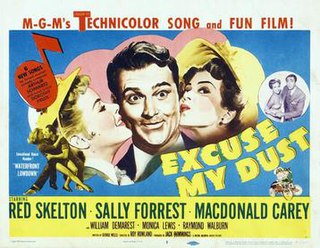
Excuse My Dust is a 1951 musical comedy film starring Red Skelton. It was directed by Roy Rowland and an uncredited Edward Sedgwick. It is based on the 1943 book of the same name by Bellamy Partridge.
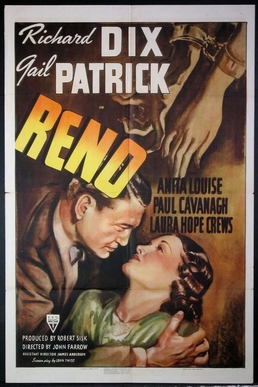
Reno is a 1939 American drama film directed by John Farrow and starring Richard Dix, Gail Patrick and Anita Louise.

Johnny Allegro is a 1949 American film noir directed by Ted Tetzlaff and starring George Raft. An ex-gangster (Raft), temporarily working as a federal agent, runs afoul of a counterfeiting crime lord (Macready) who enjoys hunting. It was one of several thrillers Raft made in the late 1940s.

Loan Shark is a 1952 American crime film noir directed by Seymour Friedman and starring George Raft, Dorothy Hart and Paul Stewart.
